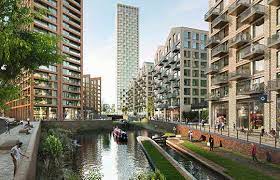Arbuthnot Banking Group plc (LON:ARBB) is the topic of conversation when Hardman and Co’s Analyst Mark Thomas caught up with DirectorsTalk for an exclusive interview.
Q1: You called your recent note “Back to profitable growth with interest-rate kicker?” Can you give a short summary of your key findings?
A1: The key message from the 2021 results is that Arbuthnot Banking Group is back to profitable growth, with an interest-rate-upside kicker. End-2021 assets were at the levels management had forecast for that date, prior to the pandemic. In contrast, today’s share price is 965p, against 1,350p in January 2020.
The accounts were complicated by a number of exceptional items, but, adjusting for them on our basis, underlying profit was £3.4m. Giving credit for more normal interest rates and a one-off fraud, they were £17m. Looking forward, franchise growth is key: loans up 25% (underlying 29%), deposits 20% and AUM 18%. The allocation of capital to high-margin, specialist SME finance continues.
Q2: And perhaps just a few of the headline numbers?
A2: Profit before tax was £4.6m (2020: loss £1.1m). Group operating income rose to £88.7m (2020: £72.5m). Earnings per share were 45.2p (2020: negative 8.9p). The final dividend declared was 22p (2020: nil). Net assets per share were 1,315p (2020: 1,270p). The total capital ratio was 14.9% (2020: 18.7%).
Q3: So, a key theme this time is sensitivity to interest rates. The market expectation of interest rate rises is accelerating with inflation. What does this mean for a bank like ARBB?
A3: You are right. A key question on the minds of many investors is how sensitive companies are to a higher inflation and intertest rate environment.
ABG is unusual in that it is a clear beneficiary from rising interest rates. ABG has a structural interest rate sensitivity, with more assets re-pricing than liabilities. It has surplus liquidity, which is held mainly in cash and balances at the BoE and in interbank deposits. As interest rates rise, it will receive the full increase on these accounts. Similarly, surplus liquidity held in interbank loans and short-term debt securities will also re-price quickly. Additionally, part of the balance sheet is funded by non-interest-bearing equity funding. ABG, like every other bank, is able to manage the way in which rises in base rates are passed on to savers. Now the scale of benefit will change as interest rates evolve.
We see the greatest uplift being generated from the initial rate increases, and management has indicated that, for the initial rate rises (i.e. from 10bps to 75bps), the sensitivity may be expected to be similar to that seen when rates fell in 2021, i.e. ca.£11.5m over a full year. Bear in mind that profit was £4.6m last year. The final point I would make is that, from the current level of low rates, the impact on credit is expected to be small. Indeed, we do not believe it will become a major issue until interest rates hit 2%. There will be individual losses, but we do not see a major impact on profit before then.
Q4: Looking further forward, what can you tell us about the strategic direction of the firm?
A4: ABG has outlined how it sees its strategic future over the medium term, and, in our note, we detail the implications for the group.
The core bank will shrink as a proportion of the group, due partially to a new originate and sell agreement that ABG has signed with a non-bank counterparty for new commercial property lending. The recently acquired Asset Alliance will see a sharp rise in capital employed. In the future state, therefore, it will account for nearly a quarter of the group, with an expected pre-tax return of ca.25% (well above the group average of 15%). The future state margins are in line with the ones currently earned.
The improving group return on capital is driven primarily by i) economies of scale – in operating units but also with group costs falling across a much larger business, ii) the improved capital efficiency in the core bank – currently 53% of capital allocated, and iii) the increase mix in high-margin (23%-33%) SME businesses, from 13% of capital in 2020 to 26% in 2021, and to 54% in the future state.
Q5: Were there any other issues of note from the results?
A5: As expected, there was an improving credit risk profile and expected loss assumptions. The capital surplus at the end of 2021 was £50m, and this is expected to fall with new regulatory treatments for software, as well as the expected growth in the business.
Looking forward, we see accelerating profit generation, as well as balance sheet optimisation, including the disposing of non-core assets, and the new originate and distribute deal for new commercial property lending in the core bank as part of the capital armoury for Arbuthnot Banking Group. We upgraded our estimates significantly on the results, primarily to reflect the accelerated assumption for base rate increases feeding through to higher net interest income, as we described above.






































